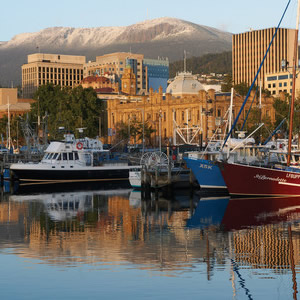State of Markets - TAS December 2014
The Tasmanian market continues to move at a steady pace

Hobart recorded moderate growth in the year to September, with values rising by 4.6 per cent, according to RP Data. While this rate is low compared to high performers like Sydney, the city outperformed larger capitals like Canberra and Perth.
Buyer activity is picking up on the island. According to RP Data, dwelling sales have climbed by 21.3 per cent in the past financial year, making Tasmania the state with the greatest improvement in transactions.
However, despite this increase in volume, prices remain well below their previous peaks. A report by the Residential Development Council shows prices in Hobart are 8.9 per cent lower than their previous high point.
Herron Todd White warns Tasmania’s economy has faced upheaval in the past seven years. The closure of major industries, including Gunns, ACL Bearings, mines, trucking companies, woollen mills and towel manufacturers, has impacted on employment figures and the economic prospects of the state.
According to Herron Todd White, Tasmania is currently in a transition period, shifting towards new industries like dairy and beef cattle. They predict the market will need to embrace new employment sectors to secure the fundamentals necessary for a strong housing market.
SQM Research has a pessimistic outlook for the state. If the Australian economy remains steady and rates stay on hold, growth for 2015 is predicted to sit at just one to three per cent.
However, Tasmania’s property market has several bright spots. The suburb of Newstead was rated the most popular in the state by users of Homely.com.au. This suburb lies in the heart of Launceston, Tasmania’s second-largest city.
Moreover, an analysis by PRDnationwide ranked Hobart as Australia’s best capital city for first home buyers. First-timers buying a new property are eligible for a grant of up to $30,000. Meanwhile, the median value of an inner-city unit is just $283,900, the lowest of any capital city.
PRDnationwide calculates the state government grant represents 10.2 per cent of the purchasing costs of a new property. However, according to the Tasmanian government, this grant is set to drop to $20,000 between January and June next year and $10,000 from June 2015 onwards.
Spreyton is in the local government area of Devonport, just five minutes’ drive from the Spirit of Tasmania port and 10 minutes from Devonport airport.
A drive through the Spreyton and Latrobe area sees a mixture of smaller weatherboard or clad properties, along with classic 1960s and 1970s brick homes, sitting on good-sized blocks of land. The average sale price for these is between $215,000 and $350,000.
Just a short drive further out, you come across sprawling rural properties on one to five acres or more. Many of these beautiful homes have views of the Tamar River where you can watch the Spirit of Tasmania cruise in and out. These larger properties have an asking price of between $350,000 and $700,000.
A few new subdivisions in the area have blocks for sale around the $80,000 to $90,000 mark. These are being snapped up by local first home buyers, taking advantage of the fact that the grant of $30,000 for newly constructed homes is still in place until December 2014.
House prices have dropped by 9.1 per cent since January 2011 when the median price for houses sat around $350,000. However, on the upside, today you can snap up a three-bedroom house for around $250,000 that rents for $250 a week.
Unit prices, on the other hand, have shown a whopping 15.2 per cent increase in price over the past 12 months. Rents have steadily increased as well, rising 11 per cent in the past three years.
In the past 12 months, 23 houses have sold in the area for a median sale price of $315,000, with an average of 80 days on the market. The vacancy rate is sitting nice and low, currently at 1.8 per cent.
Spreyton and the surrounds are home to a variety of local industries, including the famous Spreyton Cider, the state’s largest vegetable producer Simplot and Ashgrove Cheese.
Recently a delegation of 31 Chinese investors spent two days in the area looking at opportunities to invest in the state’s dairy industry. Dairy farmers are aiming to increase their capacity by 350 million litres a year or 40 per cent. In a nutshell, this means potentially more jobs and more money in the area.
Unemployment is still a major concern. However, Tasmania as a whole recorded the strongest annual retail spending growth rate in the nation. Figures from May this year show spending was 8.9 per cent higher than 12 months earlier. CommSec states it is encouraging to see trend improvement in the jobless rate and a rise in house prices.
Fast 5 hotspots